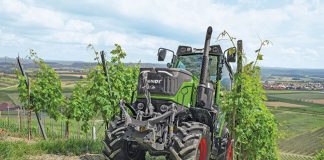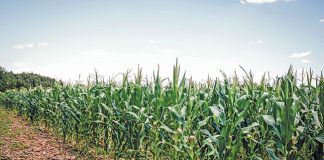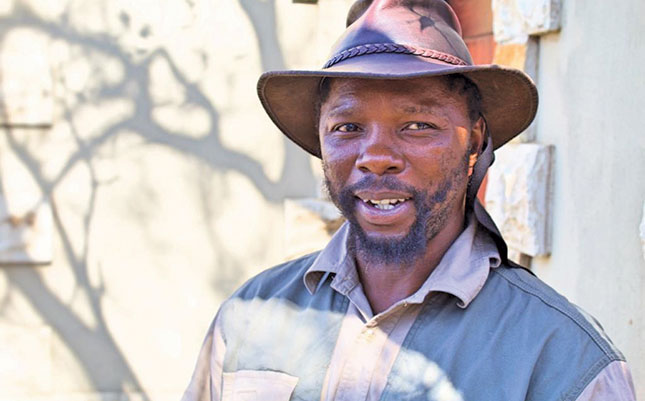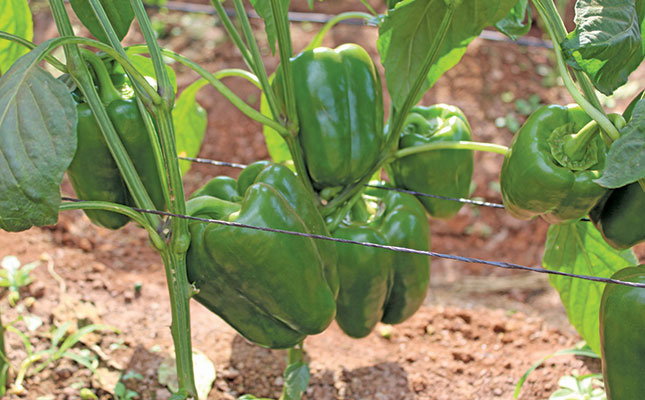
Photo: Lindi Botha
As a first-generation farmer, Hannes Wolvaardt has experienced his share of challenges. The first was financial; after obtaining his agricultural diploma, he was faced with the prospect of raising finance to start his farming venture: growing peppers.
“Banks are unwilling to finance vegetable farming because it’s high-risk and you’re not guaranteed prices on the market. Fortunately, my brother Riaan could assist with financing to lease a 3ha piece of land, which is how I started in 2012.”
Wolvaardt’s ambitious expansion plans, however, had to take a back seat.
“The lack of finance meant we had to grow slowly, which was a blessing in disguise. We grew at the right tempo and never bit off more than we could chew.”
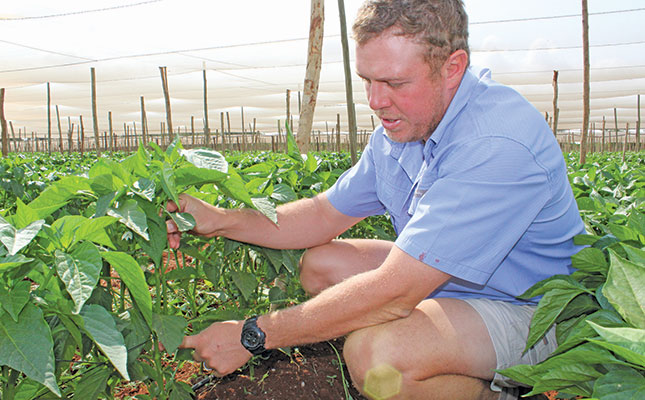
The farm, near Letsitele in Limpopo, was gradually expanded and today comprises 20ha of green peppers in open lands and 11ha of red and yellow peppers under nets.
Wolvaardt explains that sweet peppers are all initially green, and turn yellow or red when they ripen, depending on the cultivar.
Because the red and yellow peppers are harvested later, they need protection from the sun to prevent sunburn, which is why they are cultivated under 40% grey nets, while the green peppers are planted in the open lands.
The high cost of infrastructure and the difficulty in growing red and yellow peppers mean that they fetch a premium on the market.
Wolvaardt has a contract to supply Freshmark, and having such an agreement in place with a buyer has helped to ease the uncertainty of the market.
“It takes hard work to get noticed by the buyers. You need consistent quality and a packhouse that meets their stringent standards,” he says.
Wolvaardt has also learnt that skimping on fertiliser and seed does not pay off.
“Some inputs and technologies are very expensive, but the end- result is worth it. Finding the right balance between what you spend and what you get out is important, and I had to learn very quickly not to take the advice of every salesperson who came to the farm. There are so many products out there and you need to consider carefully what you want to achieve and what to spend to get there.”
Land preparation
After a harvest has been reaped, Wolvaardt starts a new cycle of soil preparation. He begins by removing the previous season’s plants, taking care to remove all the roots so that they do not create a habitat for diseases in the soil.
He then cross-rips and discs the land, creating ridges for the new plants in a north-south direction. These aid drainage in the red clay soil, and their orientation ensures that the plants receive optimal sunlight throughout the day.
The soil under the nets is then fumigated to kill fungi and nematodes. Because of its cost, this process is not carried out on the open lands; instead, these are rotated every three years.
Compost and microbes are added to all of the lands.
“Rather than resting the land every year, we add all the right biological life that builds up the soil over time,” explains Wolvaardt. “Our soil is in very good condition. We also conduct soil analysis on each land at the beginning of the planting season, and Omnia works out an exact fertiliser programme for us.
“We fertilise according to the yield we want to achieve. One needs to find a balance between how much fertiliser to add, what it costs and what’s harvested.So we fertilise for 24 weeks of production in the open lands and for 35 weeks under the nets, as the microclimate here ensures we can keep the plants going for longer.”
Choosing a cultivar
Wolvaardt plants a wide range of varieties based on the disease resistance they offer and the season. They include Syngenta’s Balta, Admiral and Lafayette under the nets, and the green pepper cultivars Diva from Starke Ayres and Banker from Enza Zaden.
“An exciting prospect is Enza Zaden’s Stay Green, which is a new cultivar that does not change colour as it ripens. This will be a game changer, as it prevents the risk of harvesting too late and having the green peppers start colouring, making them unmarketable.”
Wolvaardt plants cultivars with medium-sized internodes to get the right ratio between the size of the plant and the number of peppers it produces. “If the internodes are too long, one ends up with a very tall plant that delivers few peppers. If the internodes are too short, the plant produces more peppers than it can carry.
“It’s also important to produce the right-size peppers according to what your market wants.”
After buying seed, Wolvaardt sends it to two nurseries to grow out the seedlings to 10cm to 15cm before planting them in the land. Splitting the seed like this helps spread risk; if something goes wrong with a batch, he will at least not lose the entire crop.
The seedlings are planted in batches every second week between February and the end of May. Harvesting starts in May and ends in December.
Wolvaardt aims for as long a harvest period as possible to keep the farm productive. Letsitele is in a warm area, so he is able to plant peppers for most of the year.
“We don’t get frost and therefore produce when colder areas can’t, so generally we achieve higher prices on the market in winter because the supply is lower. But I’ve found recently that the shifts in temperature mean that many of those areas don’t get frost anymore and can produce for longer, causing pepper prices to drop due to the increased volume.”
Optimal yield
Wolvaardt achieves a green pepper yield of 40t/ha, of which 10t/ha are unmarketable due to sunburn and insect damage. The red and yellow peppers produce 60t/ha, with 20t/ha being discarded. All discarded fruit is sold on the hawker market.
Explaining the importance of pruning, Wolvaardt says a plant has a natural limit on how much fruit it can carry to maturity.
“We remove the first flowers that form, as the plant is not yet strong enough to carry fruit and the roots are not properly developed. Fewer peppers per tree also result in more uniform, medium-sized fruit maturing, rather than a mix of small and large peppers. I’ve seen the results: I get a better quality pepper if the plant is not carrying more than its capacity.”
As removing flowers is labour-intensive, the practice is carried out only on the higher-income red and yellow peppers.
These plants are also pruned down to two or three main branches, which ensures that they focus their energy on producing a good crop.
The shade cast by the nets also means that the plants do not require the extra foliage to protect the peppers from the sun, as is the case with the open-land green peppers.
Irrigation and pest control
With the farm averaging 460mm of rain annually, supplementary drip irrigation is applied at an average of 20 000ℓ/ ha per hour.
Soil moisture probes determine how regularly the plants are irrigated. These have reduced water usage drastically from the previous method, which saw lands irrigated routinely throughout the day.
The farm utilises borehole and river water, which is filtered and the pH corrected to 5,8 before irrigating.
Pest control on the farm includes spraying for plant lice and thrips. “Thrips is a particular problem, because the farm is in a citrus area,” says Wolvaardt. “They’re also a difficult pest to control because they crawl inside the flower, so the pesticide doesn’t always come into contact with them. We add sugar to our spray mixture to lure them out.”
Labour challenges
Farming vegetables is labour-intensive, says Wolvaardt. The farm employs 130 people from February to December to plant, prune, spray, harvest and pack the peppers.
“It’s a challenge to manage so many people to ensure they’re optimally productive. For example, if my staff leave five minutes before the end of a shift and come back five minutes late, it equates to 20 minutes of lost productivity per person every day. If you multiply that by 130 workers at R18 per hour each, it adds up and affects my bottom line.”
He has, however, managed to find a solution to the problem in agricultural students who need to do their practical work on farms.
“I employ them as junior managers and each is responsible for his or her own team on the farm. Some have even stayed on after completing their studies. This provides a double benefit as I get managers with good qualifications, and the students have a farm where they can do their practicals,” he says.
Email Hannes Wolvaardt at [email protected]








